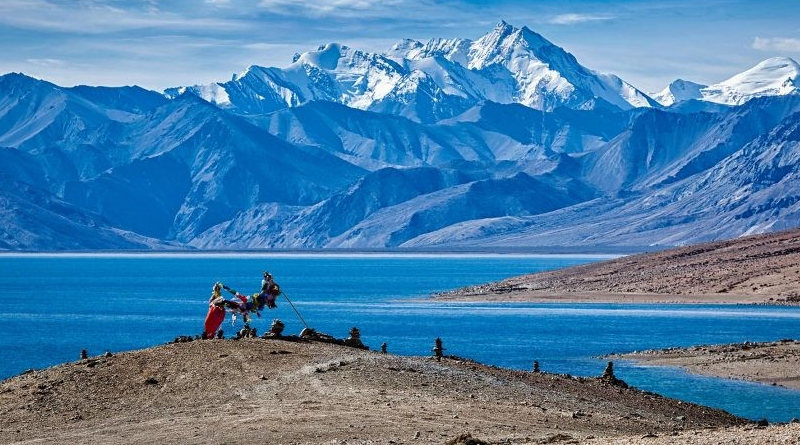With time, effort and luck, Ladakh could become north India’s power hub
Swaminathan S Anklesaria Aiyar
Thegovernment says converting Jammu and Kashmir into a Union territory (UT) will encourage a business investment boom, accelerating economic growth and employment. That’s a bit of a fantasy right now. Yet, one massive project worth ₹45,000 crore is indeed coming up, with little fanfare. This is neither in Jammu nor in the Kashmir Valley, but in Ladakh.
Promoted by the Solar Energy Corporation of India, it aims to instal 7,500 MW of solar energy by 2023. Not many readers may know that of all the places in India, the cold desert of Ladakh receives the highest solar energy, thanks to cloudless days and a clear mountain sky. Ladakh is in the rain shadow of the Himalayas and so gets very little rain during the monsoon. It gets some snow in winter from westerly winds, but even so is mostly cloudless. Hence, its conversion rate of the sun’s energy into electricity is the highest in India. Some experts think a solar cell may yield almost 10% more electricity in Ladakh than in western Rajasthan, the second-best solar site.
Sky is the Limit
Union power minister R K Singh says that the solar potential of Ladakh is as high as 23,000 MW. So, if the first projects totalling 7,500 MW succeed, capacity can later be tripled.
Besides, the plans do not yet incorporate wind energy. Wind speeds are very high in Ladakh, and it would make sense to build wind turbines in and adjacent to the solar farms. The transmission lines being built to evacuate solar power can also evacuate wind power.
Singh has been pushing this project for some time. It has two modules. One is of 2,500 MW in Suru, Zanskar, and will have transmission lines taking electricity into the Kashmir Valley. The second module of 5,000 MW (plus future modules) will use a transmission line going south to feed Haryana and Delhi. This module was originally to come up at Hanle-Khaldo. But that turned out to be a significant wildlife site. So, the site is being shifted to the Morey plains, 180 km south of Leh.
Solar power requires a huge amount of land. In many states, the high price of land has hampered the expansion of solar power. However, land prices are very low in Ladakh, and the government itself owns a lot of land. Communities are going to be paid ₹1,200 per hectare of grazing land acquired, with annual cost escalation of 3%. This will give villagers far higher returns than grazing does today. Cheap land will reduce costs.
Alas, in every other way, costs will be far higher in Ladakh than in India’s heartland. Water is very scarce. Ladakh has few roads and many new ones will have to be built to the solar sites. Today’s power infrastructure is very weak, so diesel generators must be used almost everywhere. Tiny Ladakhi villages have little population or skills. So, workers will have to be brought in at high expense from the heartland. Equipment will have to be ferried over very long distances to the suites. A new 8.8 km tunnel under the Rohtang Pass is nearing completion and will greatly improve access from Manali to Ladakh.
Installation will pose huge problems. The soil is often loose, needing compacting. Altitude sickness will hit many workers going to altitudes above 10,000 ft. Sub-zero temperatures and high winds will make construction challenging.
Plug Into the Sun
Hence, analysts fear that competitive bids for the Ladakh project will be over ₹5 per unit, double the rate in heartland sites. Ladakh can yield power aplenty, but at high cost. This will certainly provide plenty of employment for Ladakhis. But high skills for many construction and maintenance jobs can only be provided by outsiders.
Evacuating solar energy to consuming centres requires long, costly transmission lines in sub-zero temperatures and howling winds. The biggest transmission line will go through the new all-weather tunnel being built under the Rohtang Pass. Roads beyond the Pass can be blocked for months with snow, so snow-moving equipment for maintenance will be a must. Every item will add to the cost.
Once the infrastructure is put in place for the first two modules, costs should dip for subsequent modules. Many new roads will already have been built, ample electricity will be available, a skill base would have been created among locals, and experience will help avoid glitches.
Over and above that, the government must insist on using best technology to maximise output. New technology now places solar cells on the bottom as well as top of panels to capture light reflected from the earth, and that can improve solar output by up to 20%. If the best wind turbines come up adjacent to solar panels, they can hugely increase output with much additional spending on transmission.
The experiment is surely worthwhile. But overenthusiasm should be avoided. The potential is great, but so are the challenges. With time, effort and luck, Ladakh could emerge as India’s northern powerhouse. But it is too early yet to be sure of success.


